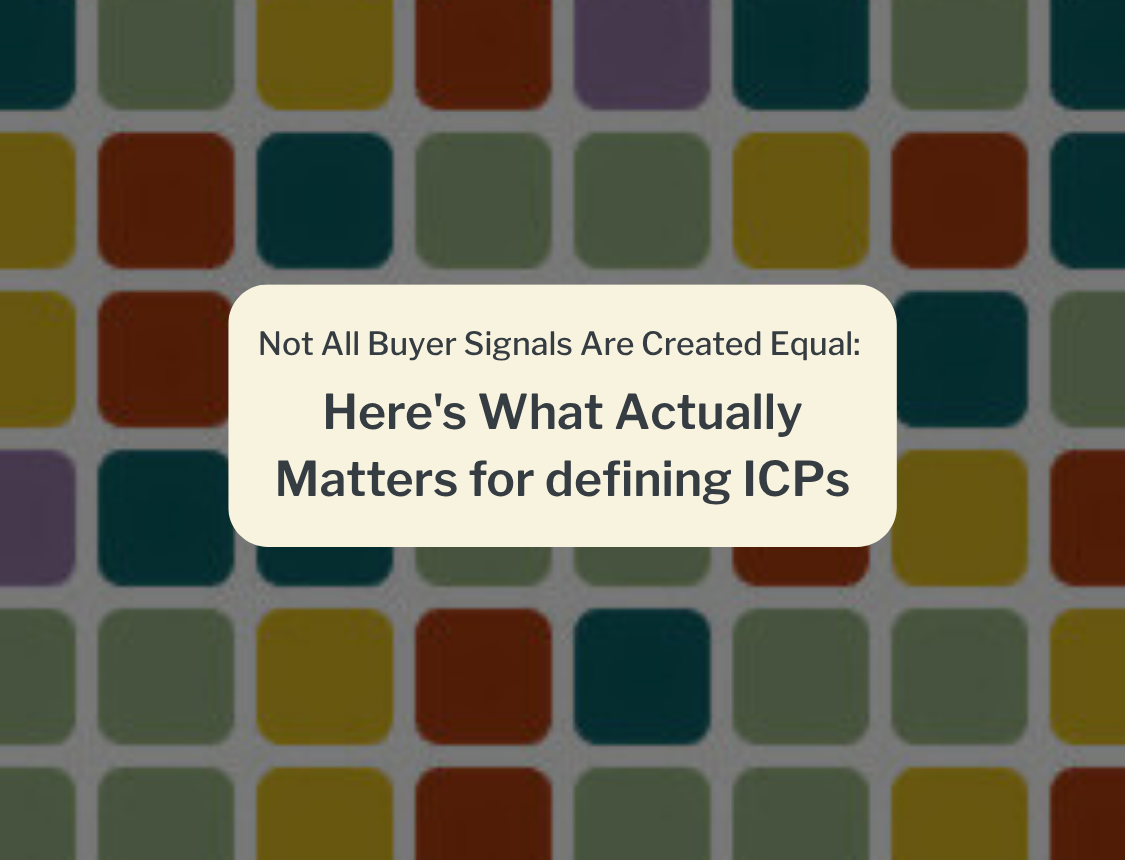
Rethinking Go-To-Market Metrics: Beyond Bookings Performance
Bookings performance has traditionally driven B2B SaaS go-to-market (GTM) strategies. The foundational assumption? Bookings are the leading indicator of future revenue. In a subscription revenue business, we know this assumption can become a fatal flaw that compromises the financial stability of the business and the tenure of the GTM leadership team.
Our preoccupation with bookings often leads to
- Lower customer satisfaction/NPS scores
- Elevated levels of churn
- Compromised company growth rates and lower valuations
While bookings may indicate sales momentum, they do not inherently measure Product-Market Fit (PMF) or a client’s ability to derive value from their investment in our SaaS. The magic of subscription revenue business models is compound annual growth. Unfortunately for the GTM leaders, the compounding magic of SaaS cuts both ways. Companies have the opportunity to grow exceptionally fast, but they can contract at that same rate if customers are not consistently getting value.
Bridging Bookings-To-Revenue-To-GTM Execution Chasm
There is no shortage of strategic advice from financial, private equity (PE), and venture capital (VC) thought leaders on LinkedIn regarding pipeline efficiency, marketing, and sales alignment as well as key SaaS growth metrics. However, from a marketing leader’s perspective, these insights often fail to provide actionable guidance on how to apply revenue-based metrics in day-to-day GTM execution.
To address this gap, we are introducing a framework to help B2B marketing leaders strengthen their financial acumen and improve their GTM strategies by linking core business performance metrics with account-based marketing execution.
Revenue Metrics Should Drive Your Marketing Strategy
To refine GTM planning, marketing leaders must move beyond bookings metrics and integrate profitability, retention, and other GTM efficiency metrics into their segment definitions. Below is a structured approach to leveraging these financial indicators.
Primary Metrics: Profitability and Durable Revenue for ICP Definition
Net Revenue Retention (NRR)
- What it is: The percentage of recurring revenue retained over time, including expansions, upgrades, downgrades, and churn.
- Why it matters: A high NRR (>100%) indicates that existing customers generate more revenue over time, which is correlated with customer satisfaction. Strong NRR also reduces the dependency of new customer acquisition to reach growth targets.
- Marketing Application: NRR should influence ICP definition and customer engagement strategies, ensuring marketing targets not just new logos but expansion-ready accounts.
Lifetime Value (CLV)
- What it is: The total profits a business can expect from a customer over the duration of their relationship.
- Why it matters: A high CLV signals strong customer retention and expansion.
- Marketing Application: Align acquisition costs with CLV to optimize paid media spend, ABM strategies, and customer journey mapping.
Logo Retention
- What it is: The percentage of customers retained over a period, regardless of revenue fluctuations.
- Why it matters: Indicates brand stickiness and is a proxy for customer satisfaction, helping assess market positioning effectiveness.
- Marketing Application: Use segment level logo retention insights to identify and understand common causes for churn. We typically see large variance in logo retention when we compare SMB, mid-market, and enterprise customer segments. This will lead you to issues associated with product functionality, use cases, onboarding, and customer support models.
Gross Revenue Retention (GRR)
- What it is: The percentage of revenue retained from existing customers, excluding expansions.
- Why it matters: Unlike NRR, GRR reveals pure retention strength, making it a crucial indicator of revenue stickiness.
- Marketing Application: GRR should influence customer success initiatives, renewal campaigns, and messaging around value realization.
Secondary Metrics:
Efficiency Metrics for Optimization: Understanding CLV provides insights into a customer's profitability. We find that specific customer segments within a business have a CLV 3-5X other cohorts. As a result, win rates, average deal size, and days to close are measures of our ability to acquire customers efficiently. They should be considered secondary metrics that get optimized after considering profitability.
Win Rates
- What it is: The percentage of deals won compared to total opportunities.
- Why it matters: Measures sales effectiveness and lead quality, highlighting marketing’s impact on pipeline quality.
- Marketing Application: Improve lead scoring models and align marketing efforts with high-conversion opportunities.
Average Deal Size
- What it is: The average revenue generated per closed deal.
- Why it matters: Helps assess market positioning and sales strategy effectiveness.
- Marketing Application: Tailor demand generation strategies and optimize ABM campaigns based on deal size trends.
Days to Close
- What it is: The average time it takes to convert a lead into a paying customer.
- Why it matters: A long sales cycle can indicate inefficiencies in the marketing-to-sales handoff.
- Marketing Application: Refine lead nurturing, enable faster sales conversions, and optimize marketing content for decision acceleration.
Conclusion: Strengthening Financial Acumen for GTM Success
Marketing leaders in B2B SaaS must evolve beyond traditional lead generation metrics and integrate revenue performance indicators into their strategies. Marketers can better align with business goals, sales teams, and customer success efforts to drive sustainable growth by focusing on revenue retention, profitability, and efficiency.
By mastering these key financial metrics, marketing leaders can:
- Define ICPs based on revenue durability rather than short-term sales targets
- Ensure marketing efforts contribute to long-term customer value
- Optimize go-to-market execution to balance acquisition, retention, and expansion
Understanding financial performance through a marketing lens is no longer optional—it’s essential for driving efficient and scalable SaaS growth.
.svg)

